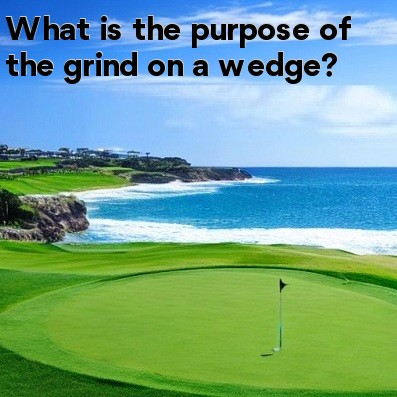
In golf, What is the purpose of the grind on a wedge?
Golfers often talk about the grind on a wedge, but what exactly does it mean? The grind refers to the shaping or removal of material from the sole of the wedge, altering its bounce and sole width. This modification can have a significant impact on how the club interacts with the turf and sand, ultimately affecting the shot outcome.
The purpose of the grind on a wedge is to enhance its versatility and performance in various playing conditions. Manufacturers offer a range of grind options to accommodate different swing types, playing styles, and course conditions. Here are some key aspects of the grind and their benefits:
- Bounce angle: The grind can alter the bounce angle, which is the angle between the leading edge and the lowest point on the sole. Higher bounce angles are beneficial for players with steeper swings or on softer turf, as they prevent the leading edge from digging too much. Conversely, lower bounce angles work well for players with shallow swings or on firm turf, allowing for cleaner contact.
- Sole width: Grinds also affect the width of the sole, the part of the club that interacts with the ground. A wider sole provides more forgiveness by preventing the club from digging into the turf, especially on shots with a more sweeping motion. Narrower soles, on the other hand, offer better turf interaction for players who like to open the face or play shots with a more precise impact.
- Grind patterns: Different grind patterns can further refine a wedge’s performance. Some popular patterns include the C-grind, S-grind, and M-grind. The C-grind has more heel and toe relief, allowing players to manipulate the face for shots requiring more versatility. The S-grind is a more neutral option with a trailing edge that is slightly rounded, making it suitable for a wide range of players and swing types. The M-grind, featuring a crescent-shaped sole, offers versatility and performs well in a variety of conditions.
Choosing the right grind for your wedge is critical to optimizing your short game performance. It is essential to consider your swing type, course conditions, and the shots you typically play. Here are a few factors to keep in mind:
- Swing type: Assess your swing and determine if you have a steeper or shallow motion. A steeper swing would benefit from higher bounce angles, while a shallower swing works well with lower bounce angles.
- Course conditions: Consider the firmness of the turf you typically play on. Softer grass may require higher bounce angles and wider soles to prevent excessive digging, while firm turf would benefit from lower bounce angles and narrower soles to ensure clean contact.
- Shot selection: Think about the shots you commonly play around the greens. Do you like to open the face for flop shots or hit low runners? Different grinds can enhance specific shot types. For example, a grind with more heel and toe relief would be beneficial for flop shots, allowing you to manipulate the face and create more loft.
Ultimately, finding the right grind for your wedge can significantly improve your short game performance. It is recommended to consult with a professional club fitter or an experienced golf instructor who can analyze your swing and make recommendations based on your individual needs.





